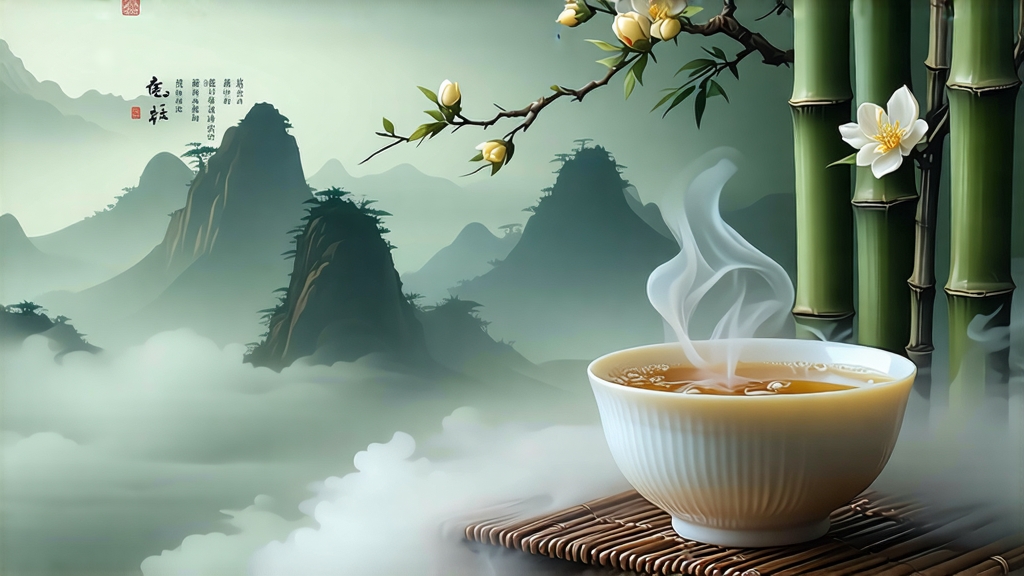
Tucked high on the northern rim of the Sichuan Basin, where perennial cloud banks roll over lush sandstone ridges, lies Mengding Mountain—Meng Shan—the legendary “Birthplace of World Tea Culture.” It was here, in the mist-cooled bamboo groves of Ya’an, that the earliest Buddhist monks discovered that a brief, gentle suffocation of freshly fired leaf could coax a mellow, chestnut-sweet cup unlike any other. The technique, later christened men huang—“sealed yellowing”—became the soul of China’s rarest tea family: yellow tea. Among its six classical styles, none carries more imperial pedigree than Mengding Huangya, the “Yellow Bud of Mengding.” For thirteen centuries this single-bud pick was carried by fast horse and bamboo-ribbed palanquin to the Forbidden City, earning Tang dynasty poets’ praise and Song dynasty emperors’ first-spring libations. Today, only a few hundred kilograms leave the mountain each April, making a genuine lot harder to find than the finest pre-Qingming Dragon Well, yet its honeyed aroma and satin texture remain the benchmark against which all other yellow teas are judged.
Mengding Huangya is not a garden name but a protected geographical indication; within the 1,200–1,450 m core zone three micro-cultivars dominate: the ancient seed-grown “Mengding Qunti,” the 1970s-selected “Mengding #9,” and the anthocyanin-rich “Ziyan #1” whose purple spring shoots turn jade-lime during yellowing. Farmers pluck only the unopened bud, or at most the bud plus the half-unfurled first leaf, when the dew just lifts on clear mornings between the Qingming and Grain Rain solar terms. A master picker’s daily haul—roughly 500 g fresh—will finish into fewer than 100 g of finished tea, explaining why each gram contains between 28,000 and 32,000 individual buds.
The craft begins the moment the basket is lowered down the slope. First, the leaves are spread no thicker than two fingers on woven rattan trays and withered for 90–120 minutes in faint mountain shade; the goal is to reduce grassiness while keeping the enzymatic milky sweetness intact. Next comes the kill-green, but Mengding Huangya is almost unique in using a two-stage roast in a shallow, red-hot iron guo pot kept at 130 °C. The tea master tosses the buds with a rhythmic “push, lift, shake” motion for exactly 3.5 minutes; the leaf temperature spikes to 85 °C, deactivating polyphenol oxidase yet preserving a faint rim of green at the bud tip. Immediately after, the steaming pile is wrapped in thick, damp linen and placed inside a bamboo chamber lined with fresh chestnut leaves—an indigenous micro-fermentation step that lasts 4–6 hours at 32 °C and 75 % humidity. During this crucial “sealed yellowing” the buds re-absorb their own moisture, chlorophyll gently breaks down, and catechins dimerize into theaflavins, gifting the tea its hallmark golden color and magnolia-honey fragrance. A second, cooler roast at 80 °C follows to lock in the flavor, after which the leaf is hand-rolled into tiny, sparrow-tongue shapes and given a final low-temperature bake for 40 minutes. The entire cycle—from pluck to finished tea—must be completed within 28 hours, before the mountain night air grows too cold and arrests the subtle oxidation.
Because the leaf is so young and the yellowing so delicate, Mengding Huangya demands a soft, mineral-rich water and patient, low-temperature brewing. The classic Sichuan gaiwan method calls for 3 g of dry bud in a 120 ml porcelain vessel, water at 80 °C, and an initial 45-second infusion that increases by ten seconds each steep. The first pour releases a pale chardonnay liquor and a scent of fresh lilies steamed over bamboo; the second, a richer marigold color with notes of toasted pumpkin seed and whipped cream; by the third, a faint alpine coolness appears, like the breath that drifts from the cliffside temples at dawn. A single portion will yield five elegant steeps, after which the buds—now fully re-hydrated and standing upright like tiny jade spears—can be transferred to a tall glass of cool spring water